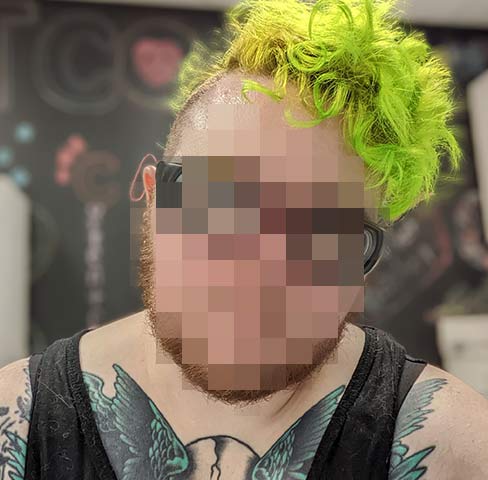Meet Fenris
Fenris' story
HRT Access Fund recipient

Fenris (they/them) is a 24-year-old currently struggling to recover from homelessness and the financial strain caused by it. They have fought paycheck to paycheck just to put food on the table and make sure they received their seizure medications at least semi-regular intervals. Their focus has mainly been stuck on survival, so they are looking forward to the relief this grant will provide.
Fenris enjoys spending their free time taking nature photography and being with their pets. They are looking forward to having access to HRT to aid them in feeling more comfortable in their own skin and achieving the appearance that best fits them.
Fenris' timeline
-
Award Granted
July 22, 2022
Fenris was awarded a grant toward HRT/GaHT! -
HRT Onboarding Date
September 20, 2022
Fenris was seen by their HRT/GaHT provider.
About Testosterone+
On average, it costs $1,200+/year for Fenris' care.
- What is it?
- Accessibility
- After care
What is it?
Testosterone+ refers to the gender-affirming hormone replacement therapy (HRT) methods that some trans men, trans masc, and non-binary people take that result in physical changes which align with their gender identity. Every person's preferences and personal healthcare needs vary, so this can include oral medications, injections, and transdermal patches.
How accessible is it for trans folks to receive this care?
For trans folks who live in states most impacted by anti-trans healthcare legislation, it can be extremely difficult to find a knowledgeable, trans-affirming provider as well as access prescription medication. Many insurance plans do not cover HRT. For trans folks without insurance coverage, the ongoing out-of-pocket expense can be challenging.
What is the impact of this care on the recipient’s life?
Testosterone+ introduces a wide range of masculinizing physical, emotional, and psychological changes that align with their gender identity. This often leads to a more positive emotional well-being, increased confidence, increased safety when in public, and better opportunities at employment and more.
Your support funds healthcare that's
life-changing. Life-saving. Life-giving.